Sometimes you connect to WiFi but you don’t have access to the internet. Your WiFi is available but a yellow triangular symbol appears on your WiFi. Your computer shows it is connected to WiFi but says no internet access. This problem may occur to all the devices connected to the WiFi or may be specific to only a few devices. A glitch can make this issue occur and a restart can help. Additionally, misconfigured network settings, corrupted network drivers, DNS, or IP address issues can cause this problem to raise its head. If you are facing this problem, you are in the right place. This article explains in detail solutions to resolve the issue.

WiFi connected, but no internet access
The following methods will help you resolve this Wi-Fi internet connectivity issue in Windows 11/10.
- Restart your computer
- Reboot your Modem and Router
- Reset Winsock
- Reset DNS
- Update Network Adapter Driver
- Change DNS
- Reset IP address
- Use the Network Reset option.
1] Restart your computer
The first and foremost thing to do when you can’t connect to the internet is to restart your computer. Restarting your system may often clear some minor faults.
Read: No Internet, Secured.
2] Reboot your Modem and Router
In addition to your computer, if all other devices cannot connect to the internet, there is probably an issue with your network connection. Rebooting the modem and router helps to clear the router cache and may fix some minor network glitches. Unplug the modem and router from the socket. Please wait for some time and plug them back again. At the same time, doing this, check if all the lights are turned on on both devices. If you don’t see any lights, your hardware probably has a problem. If the basic reboot didn’t help you to get back online, proceed to the next step to fix the problem.
Read: No Internet after resetting the router
3] Reset Winsock
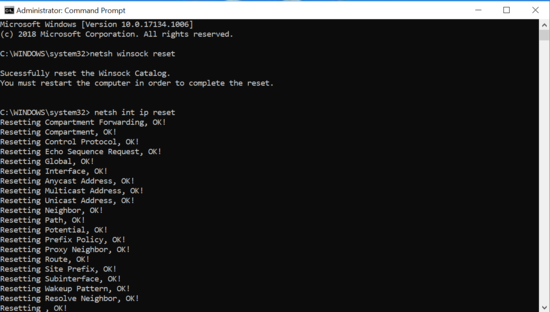
To reset Winsock, follow the below steps
Go to Start Menu and type Command Prompt in the search box.
Right-click on the Command Prompt from the menu and click Run as administrator.
Type the following command and hit Enter.
netsh winsock reset
Type the following command and press Enter.
netsh int ip reset
Close the Command Prompt and restart your computer.
TIP: Our portable freeware FixWin offers several 1-click fixes to resolve Internet & Connectivity problems.
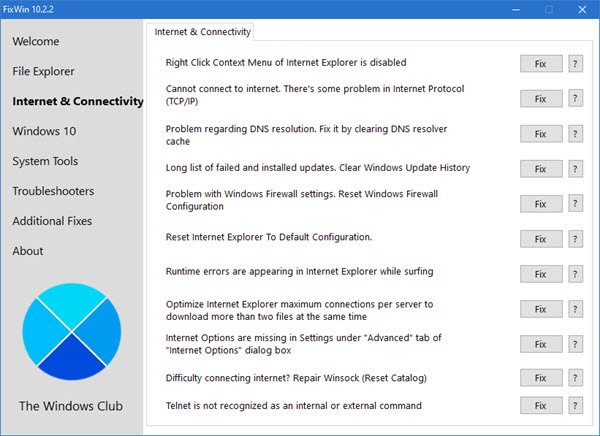
4] Reset DNS
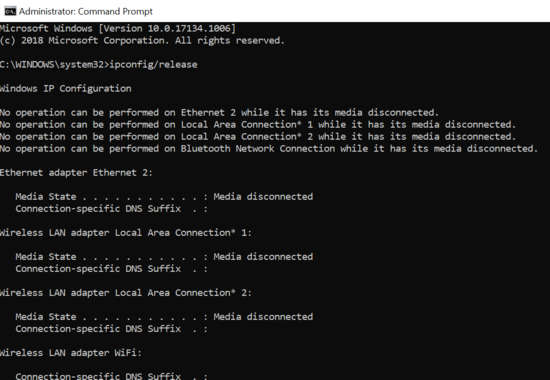
Sometimes the problem with your current IP address can cause internet connectivity issues. Resetting DNS would help resolve the problem in such a case. To reset the DNS, follow the below steps.
Go to Start Menu and type Command Prompt in the search box.
Right-click on the Command Prompt from the menu and click Run as administrator.
Type the following command and hit Enter.
ipconfig/release
Type the following command and hit Enter.
ipconfig/renew
Close the Command Prompt and Restart your computer.
Read: Network icon says No internet access.
5] Update Network Adapter Driver
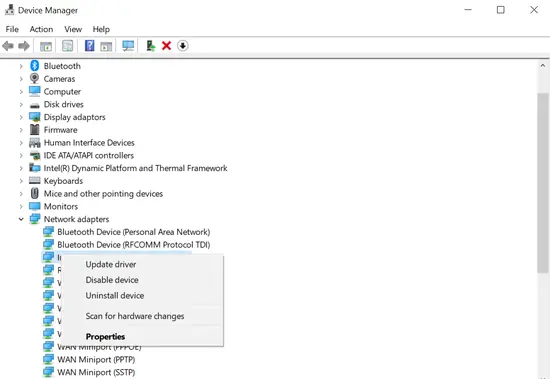
Most of the time, updating your Network Adapter Driver to the latest version help run the computer smoothly. Here is how to do it.
- Press Windows Key +X simultaneously on your keyboard and click Device Manager from the menu.
- Select the Network adapter and right-click on your device from the dropdown menu.
- Click Update device from the drop-down menu.
- Restart your computer and check if the error is fixed.
- Click OK to save changes.
Once done check if the problem is resolved.
6] Change DNS
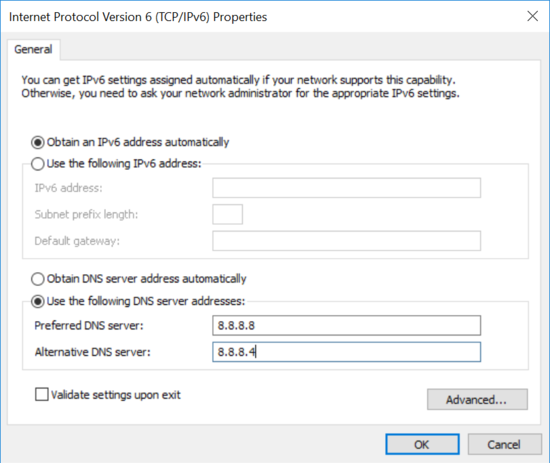
You may face connectivity issues if your DNS server from ISP is not functioning properly. In such a case, changing DNS to the Google Public DNS server might help. Here is how to do it.
- Press Windows Key +X simultaneously and click Network Connections.
- Go to Change adapter settings at the bottom of the page.
- Right-click on your network connection and click Properties from the drop-down menu.
- Select Internet Protocol Version 4((TCP/IPv4) in the Properties window and click the Properties button.
- Click on the radio button with the option Use the following DNS server address.
- Next to Preferred DNS server option, type 8.8.8.8.
- Now next to Alternate DNS server, type 8.8.4.4.
- Click OK and Restart your system.
7] Reset IP address
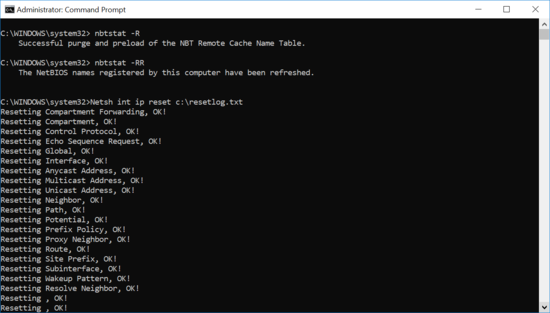
You may face network connectivity issue mostly if the IP address is not configured properly. In that case, resetting IP addresses in the command prompt should help. Here is how to do it.
Go to Start Menu and type Command Prompt in the search box.
Right-click on the Command Prompt from the menu and click Run as administrator.
Type the following command and hit Enter.
ipconfig/flushdns
Now type the following commands and hit Enter key on your keyboard after typing each one on your command prompt.
nbtstat -R
nbtstat -RR
Netsh int ip reset c:\resetlog.txt
Netsh winsock reset
Once done close the command prompt window and restart your system.
On the start menu, type control panel and click on it.
Go to Network and Sharing Center and click Change adapter settings.
Right-click on your WiFi adapter and select Disable from the drop-down menu.
Wait for a few minutes and Enable it again from the same menu.
8] Use Network Reset option
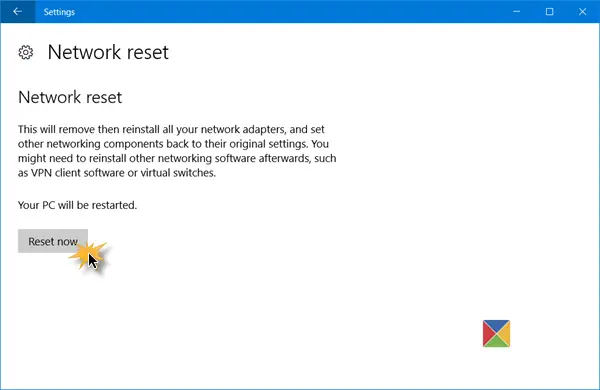
Open Windows Settings and use the Network Reset option. This will likely resolve all WiFi connectivity issues.
That’s all.
How do I fix WiFi problems in Windows?
You can fix the most common WiFi problems in Windows by restarting your PC and router, updating network drivers. running Network Troubleshooters, or using the Network Reset option in Windows Settings.
Leave a Reply